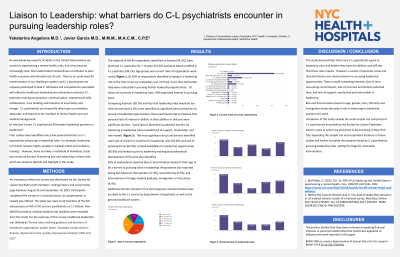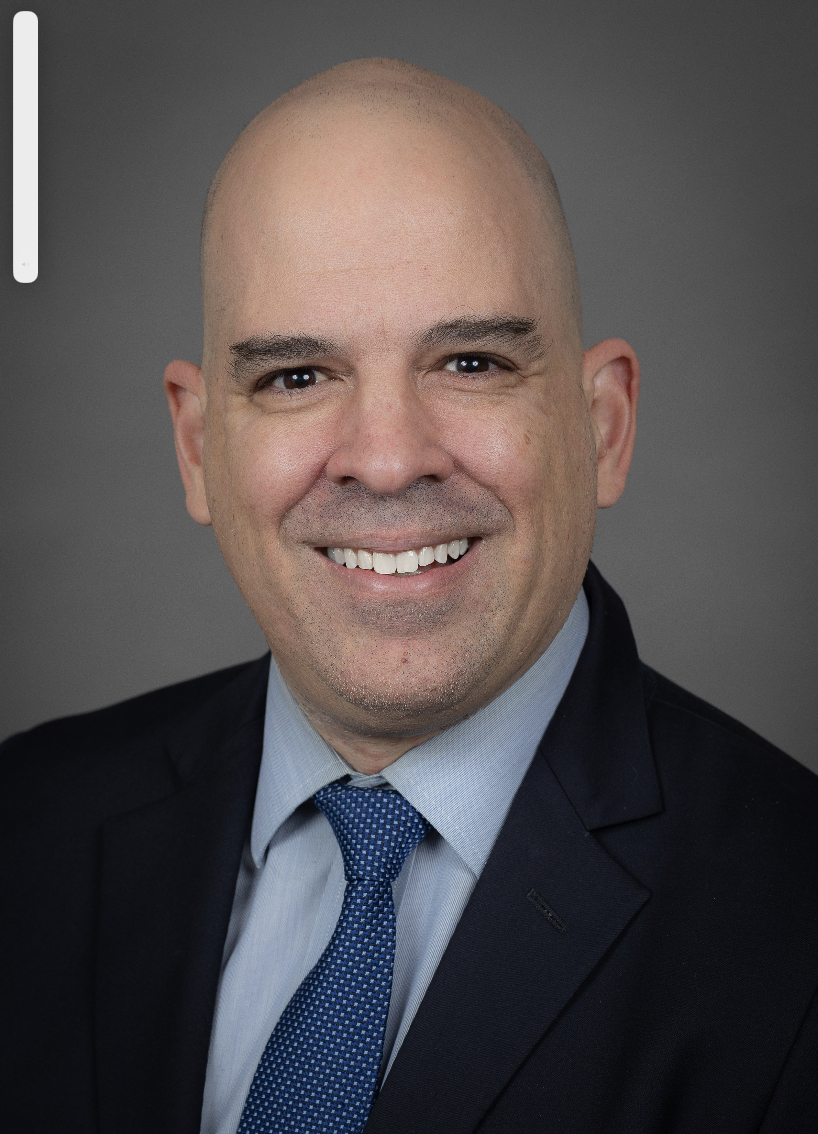Systems-Based Practice and Administrative Psychiatry
Session: Poster Session
(188) Liaison to Leadership: Obstacles in the Pursuit of Leadership Roles

Trainee Involvement: No
.jpg)
Yekaterina Angelova, MD (she/her/hers)
Director of Consultation-Liaison Psychiatry
NYC Health + Hospitals | Harlem
New York, New York, United States
Javier Garcia, MD, MACM, MMM, CPE
Chair of Psychiatry
Northwell Health - SSUH
New York, New York, United States
Presenting Author(s)
Co-Author(s)
Bronson B, Perlman G. The Management Experiences, Priorities, and Challenges of Medical Directors in the Subspecialty of Consultation-Liaison Psychiatry: Results of a Needs Assessment. J Acad Consult Liaison Psychiatry. 2021 May-Jun;62(3):309-317. Neeley SM, et al. The state of leadership education in US medical schools: results of a national survey. Med Educ Online. 2017;22(1):1301697.
Background: In our rapidly evolving healthcare system, it is increasingly clear that undertreated mental illness significantly contributes to poor health outcomes and economic burden (Roehrig, 2016). C-L psychiatrists are uniquely positioned at the interface of mental health care and medical management as mediators, advocates, and experts. Our skill set is central in addressing the need for healthcare system transformation. So why aren’t there more C-L psychiatrists in healthcare leadership? The literature identifies minimal training in healthcare management and lack of standardized leadership curriculum as possible barriers (Bronson, 2021; Neeley, 2017). This study aims to further explore obstacles C-L psychiatrists encounter in pursuit of leadership roles.
Methods: We created a 22-question anonymous, voluntary survey using Google Forms and shared it with several regional C-L departments and two closed C-L psychiatry Facebook groups. We gathered participants’ basic demographics, current roles, board certification status, and number of years in practice. Participants were asked to comment on their aspiration to leadership roles and rate any potential personal, social and structural barriers to pursuing these roles on a linear scale. Leadership roles were defined as “roles involving guidance and direction of healthcare organizations and/or teams (e.g. division director, department chair, CMO, CEO).”
Results: Preliminary results were obtained from 41 respondents. The majority (48.8%) of participants were 30-40 years old, identified as women (61%), practiced C-L for 1-5 years (46.3%) and were C-L attendings (51.2%), followed by C-L directors (26.8%). Most (80.5%) reported that they have aspired to a leadership role at some point in their career. 27.3% aspired to a leadership position beyond their immediate division or department. Very few identified lack of interest or skill as personal barriers to pursuing leadership roles. Competing interests and priorities and fear that a leadership role would be too time-consuming were cited as significant obstacles. In terms of social barriers, 43.9% felt there was a lack of role models and mentors. The most significant structural barrier identified was the lack of reward or incentive in leadership roles (65.9%). Bias and discrimination were prevalent, with 14.6% of respondents citing bias or discrimination based on their age, 14.6% based on their gender, and 9.8% based on their race / ethnicity.
Conclusion: Preliminary results demonstrate that C-L psychiatrists aspire to leadership roles and feel they have the skill set required. However, many cite competing personal priorities, lack of mentors, and lack of reward or incentive as significant barriers to pursuing these roles. Expanding the study sample size will further elucidate these obstacles, setting the stage for actionable interventions.
References:
Roehrig C. Mental disorders top the list of the most costly conditions in the United States: $201 billion. Health Aff (Millwood). 2016; 35: 1130-1135

